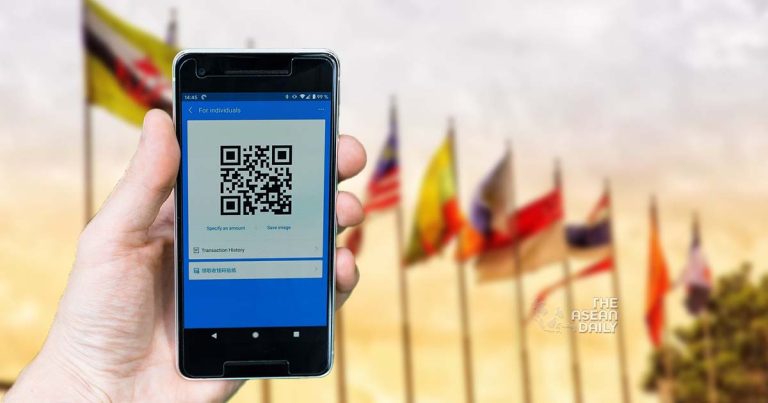1-8-2023 (JAKARTA) A newly implemented cross-border payment system among Southeast Asian nations could deepen financial integration among participants, bringing the ASEAN bloc closer to its goal of economic cohesion. The program, which enables residents to pay for goods and services using a QR code in local currencies, is now operational in Indonesia, Malaysia, Thailand and Singapore, with the Philippines expected to join soon.
The move comes after the five Southeast Asian countries signed an official agreement late last year. At the recent ASEAN summit in May, leaders reiterated their commitment to the project, pledging to work on a road map to expand regional payment links to all ten ASEAN members.
The scheme is aimed at supporting and facilitating cross-border trade settlements, investment, remittance, and other economic activities with the goal of implementing an inclusive financial ecosystem around Southeast Asia. Analysts say retail industries will particularly benefit amid an expected rise in consumer spending, which could in turn strengthen tourism.
The cross-border payment system will reduce the region’s reliance on external currencies like the U.S. dollar for cross-border transactions, particularly among businesses. The greenback’s strength in recent years has resulted in weaker ASEAN currencies, which hurts those economies since the majority of the bloc’s members are net energy and food importers.
A unified cross-border digital payment system will “foster a sense of regionalism and ASEAN-centrality in managing international affairs,” said Nico Han, a Southeast Asia analyst at Diplomat Risk Intelligence, the consulting and analysis division of current affairs magazine The Diplomat.
The system enables funds to be sent from one digital wallet to another by connecting QR code payment systems. Digital wallets can be linked to accounts with formal financial institutions. Fees and exchange rates will be determined by mutual agreement between the central banks themselves.
Micro enterprises as well as small- and medium-sized businesses will emerge as winners from regional payment connectivity. Such companies account for over 90% of businesses in Southeast Asia, according to the Asian Development Bank.
The cross-border payment system will also enable merchants and consumers to build a robust payment history and provide valuable data for credit scoring. Increased non-cash transactions would allow policymakers to capture transaction data and trade flow more effectively, assuming these data are accessible. This, in turn, could lead to better economic forecasting and policymaking.
Strong political will from regional leaders will be required to address security and fraud issues and undertake the task of educating the public to embrace the new payment system. These factors can collectively contribute to a time-consuming process.




